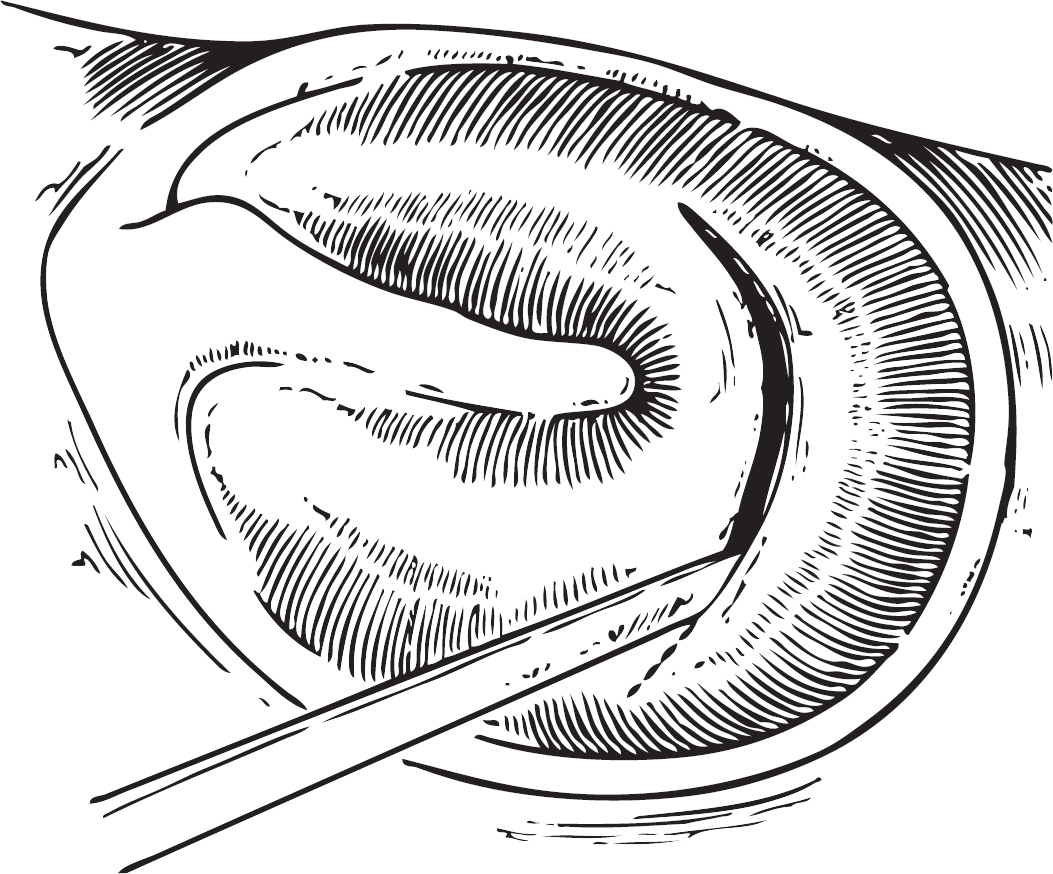Therapeutic (Wide-Field) Myringotomy
When a patient has an impeding complication of acute purulent otitis media, a wide myringotomy provides drainage and access to material for culture and sensitivity.
2-1 Therapeutic (Wide-Field) Myringotomy
Indications
When a patient has facial nerve paralysis, vertigo, or intracranial complications (e.g., meningitis or cerebritis) caused by acute otitis media (AOM), a wide myringotomy for drainage and culture should be performed.
Preoperative Evaluation
Preoperative evaluation requires a complete pneumatic otoscopic examination. Audiologic evaluation may be difficult to obtain in an acutely ill child and is of limited value before this procedure.
Operative Technique
1. General anesthesia provides the maximum comfort and surgical exposure for therapeutic myringotomy. However, in some instances, depending on the child’s condition, the procedure may be performed without anesthesia.
2. The ear canal should be cleared of wax to provide visualization.
3. A wide myringotomy should be made from the anteroinferior quadrant to the posteroinferior quadrant (Fig. 2.1).
4. The contents can then be aspirated and should be sent for culture if there is complicated acute infection.
5. A tympanostomy tube should be placed at the same time for long-term ventilation (see Section 1-1).
Complications
1. Purulent otorrhea
2. Early tube extrusion
3. Granuloma
4. Permanent perforation
5. Tympanosclerosis
6. Cholesteatoma




